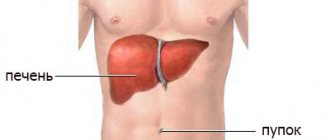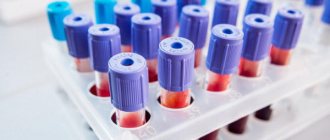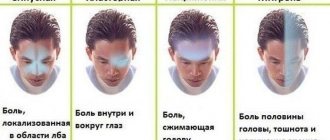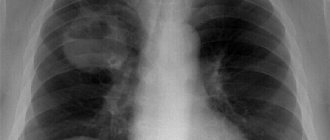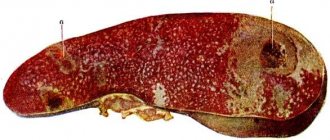Just a few centuries ago, women poisoned their bodies with lead white, burned their skin with vinegar, and performed bloodletting for one thing—pale skin. In those days, such a complexion was considered the standard of beauty and aristocracy, but in the modern world it is a sure sign of possible diseases, especially if pallor accompanies a person for a long time. Many people notice that their faces are pale. The cause may be any disease, so it is important to be examined on time and begin treatment.
Why does the skin turn pale?
Depending on what is the main cause of pale skin, you can explain how this happens.
For example, with anemia, the synthesis of hemoglobin (the iron-containing coloring pigment of red blood cells) is impaired. A deficiency of the substance explains the unnatural paleness of the skin. In heart failure, due to impaired contractile function of the heart, the intensity of blood circulation gradually decreases, and, consequently, the flow of oxygen and nutrients into the tissues, including the skin.
Poor blood circulation is one of the main causes of this symptom. Changes in blood circulation can be caused by a number of reasons, one of which is narrowing of blood vessels. This happens with hypothermia, stress, overwork.
What changes in health does a rash on the nose and cheeks indicate?
rash on nose and cheeks
A rash on the face is almost always a sign of a malfunction in the body. If the rash appears on the nose and cheeks and looks like a sunburn, and the area where it appears is shaped like a butterfly, the rash may be a symptom of the autoimmune disease lupus.
In addition, symptoms of lupus include:
- fatigue;
- joint pain;
- muscle pain;
- increased body temperature;
- enlarged lymph nodes;
- chest pain;
- dyspnea;
- fluid retention;
- frequent headaches.
Causes of pallor
The reasons for its appearance can be different, which is why treatment methods also differ. Let's consider them separately.
The causes of pale skin can be divided into congenital and acquired. Pale skin color can be inherited from birth - this most often happens in fair-haired people. If a dark-haired person has this individual difference, then the appearance becomes “demonic-mysterious.”
In this case, modern youth admires: “Wow! You look like a vampire!" – after American TV series, vampires are in trend, and older people ask: “Does anything hurt?”
With a sharp spasm of blood vessels, which can be caused by cold, stress, intoxication, the skin of the face becomes pale. If this condition is caused by a disease, the symptom is called "cyanosis".
One of the diseases that has this symptom is iron deficiency anemia. The level of hemoglobin in skin cells decreases due to impaired iron synthesis. With a lack of red blood cells, not only does the skin turn pale, but weakness appears, vitality decreases, and malfunctions appear in the functioning of organic systems.
The causes of anemia may be the following factors:
- menstrual irregularities – periods that are too long or too heavy;
- internal bleeding - ulcerative, proctological, pulmonary;
- chronic blood diseases;
- kidney disease;
Often mothers are concerned about the pallor of the baby’s skin. If you have any suspicions, you should consult a doctor. The doctor, having examined the oral cavity, eyes, and nails, will be able to draw conclusions about the baby’s health condition. If the child is active, eats well and sleeps well, the cause of pallor may be heredity and a lack of “sun” vitamin D.
If the baby gets tired quickly or gets irritated, it is worth checking to see if he is developing anemia. You should also start to worry if your child has dark circles under his eyes: this can be a symptom of several diseases, for example allergies.
In addition, this may indicate urinary tract diseases. Bruises that appear on the baby’s body for no reason should also cause concern.
Together with pale skin, they are a sign of diseases of the circulatory system.
It is worth remembering that if any alarming symptom appears, you should consult a pediatrician, and not draw conclusions and “prescribe” treatment yourself. Only a specialist should conduct an examination, select treatment and prescribe the necessary medications.
In most cases, pale skin can be explained by simple everyday reasons. Sometimes this is an individual feature. The main reason for this appearance is the lack of walks in the fresh air and insufficient physical activity, sitting for a long time in front of a computer monitor or in front of the TV. Due to lack of oxygen, hemoglobin levels decrease.
Another reason is chronic fatigue. Nervous tension, physical activity and poor ecology disrupt the rhythm of sleep. The body does not recover, attractiveness disappears.
A pale complexion may indicate poor nutrition. A large amount of carbonated water, alcohol, fatty and spicy foods leads to problems associated with the digestive system and, accordingly, to pallor.
In order to determine the disease, it is not enough to note only pallor. It is worth paying attention to the mucous membranes and nails. In case of serious problems, they also become discolored.
To determine your health status, look at your face
How to determine the state of health by the face
We try to maintain a youthful appearance of the face for a reason - not only our emotions are reflected on the face, but also our age. The presence of facial expressions will tell you what feelings we often experience - wrinkles on the forehead and between the eyebrows indicate the habit of frowning, nasolabial folds - smiling, crow's feet - squinting.
It is believed that problems with internal organs can be seen on the face, so during the examination doctors carefully examine the eyes, tongue and other areas. It is completely impossible to determine the state of health by looking at the face, but estet-portal.com will tell you what changes may be caused by problems in the body.
In addition to the fact that different areas of the face correspond to internal organs and can reflect their condition, health problems can be indicated by various changes that appear on the face throughout life. These include:
- yellowness of the skin and eyes;
- rash on the nose and cheeks;
- excessive facial hair;
- pale skin;
- dry skin and peeling lips;
- abnormal pigmentation;
- premature wrinkles;
- cracks in the corners of the mouth;
- yellow spots around the eyes;
- dark circles and bags under the eyes.
The appearance of changes on the face may be associated with certain diseases, so it is necessary to consult a doctor in a timely manner.
Diagnostics
A therapist will tell you how to determine what causes a change in complexion. When prescribing your tests or recommending a consultation with a more specialized specialist, he will proceed from the new shade of your skin.
So, if your face is pale, you will be prescribed:
- general blood test with mandatory determination of reticulocytes - the ancestors of red blood cells;
- osmotic resistance of erythrocytes;
- coagulogram;
- liver tests.
If you are concerned about yellowness, the therapist refers you to an infectious disease specialist, and he, focusing on the history of your life and this disease, as well as ultrasound of the liver, gallbladder and pancreas, liver tests and markers for viral hepatitis, decides whether he, a gastroenterologist or hematologist.
Olive complexion requires the attention of a gastroenterologist, who will examine, palpate and listen to your stomach, prescribe an ultrasound of the abdominal cavity (it is performed after preparation) and FEGDS (here you will have to swallow the probe).
What does yellowness of the skin of the face and eyes indicate?
yellowness of the skin of the face and eyes
If you notice yellowness of the skin of the face and sclera of the eyes, this indicates the presence of jaundice. Jaundice occurs due to the accumulation of bilirubin (a yellow pigment produced by the breakdown of dead red blood cells in the liver) in the blood and body tissues.
Under normal conditions, the liver removes this pigment, so a yellow tint to the skin and sclera of the eyes is a clear sign of a malfunction of this organ. Sometimes jaundice can be a symptom of a gallbladder or pancreas problem.
In addition, the following symptoms are possible:
- increased body temperature;
- headache;
- fatigue;
- loss of appetite;
- nausea and vomiting;
- weight loss;
- stomach ache;
- itchy skin;
- urine and stools are too light.
Treatment methods
How can you get rid of pale face? The main approach is to treat the disease that causes the pallor. In this regard, the list of medications used depends on the specific disease identified after the examination.
To treat vegetative-vascular dystonia, sedatives, physiotherapy methods, and dosed physical exercises are used. These techniques allow you to restore the normal tone of the autonomic nervous system.
Long term prospects
The consequences of pallor will depend on its cause. Acute cases of pallor require immediate medical attention. Persistent pallor can often be treated with medication. However, getting a proper diagnosis of what is causing your paleness will be the key to prompt and proper treatment.
Sources:
Impulse follows strict sourcing guidelines and relies on peer-reviewed studies, research institutions and medical associations. We avoid using insufficiently expert links.
- Collings S, et al. (2016). Non-invasive detection of anemia using digital photographs of the conjunctiva. DOI: doi.org/10.1371/journal.pone.0153286
- Kalantri A, et al. (2010). Accuracy and reliability of pallor for detecting anemia: A hospital-based diagnostic accuracy study. DOI: doi.org/10.1371/journal.pone.0008545
- Mayo Clinic Staff. (2017). Anemia. mayoclinic.org/diseases-conditions/anemia/symptoms-causes/syc-20351360
- Paleness. (n.d.). ufhealthjax.org/encyclopedia/content.aspx?contentID=003244&projectTypeID=1
- Silver B.J. (2014). Anemia. clevelandclinicmeded.com/medicalpubs/diseasemanagement/hematology-oncology/anemia/
How to get rid of pallor
Healthy skin color is an indicator of the health of the entire body. Cosmetics can only mask a pale complexion, but this will not solve the problem of physical condition.
If a medical examination does not reveal any ailments, you can restore a healthy complexion on your own. Playing sports will help with this.
Physical exercise improves blood circulation and restores the functioning of the cardiovascular system. This means that in a couple of weeks your complexion will return to normal.
If you are worried about a pale face, the reasons for which are a heavy lunch and slight dizziness, try to lie down. In this case, the head should be lower than the level of the heart.
Linking Excessive Facial Hair Growth to Health Conditions
Linking Excessive Facial Hair Growth to Health Conditions
The appearance of unwanted hair along the jawline, chin and upper lip in women is called hirsutism. This problem can occur with polycystic ovary syndrome. The predominance of male hormones in the body leads to the growth of facial hair.
In addition to polycystic ovary syndrome, certain medications or diseases of the adrenal glands can cause the problem.
In any case, you should not ignore such changes on your face - consult a doctor for the necessary tests.
Therapeutic effect
Pale skin can be restored to its healthy appearance only after the root cause of this condition has been identified and eliminated.
If the dullness of the skin occurs due to severe fatigue, hypothermia or stress, you need to limit the body as much as possible from the main impact factor. If pale skin is caused by a malnutrition (insufficient nutrition or a consequence of a strict diet), then you need to start eating properly and nutritiously again.
Sometimes enhanced nutrition is supported by the administration of a vitamin complex.
.
If you have iron deficiency, you also need to pay special attention to the composition of your diet. Mandatory products in this case are high in iron (red meat, apples and a number of other products).
Do not try to determine the cause of this symptom on your own. Professional diagnosis of the nature of the manifestation will help you respond more adequately to the disease, that is, apply the correct treatment. A number of diseases that include changes in skin color in the list of symptoms can be very serious and life-threatening.
What health problems are caused by dry skin and peeling lips?
What health problems are caused by dry skin and peeling lips?
Dry skin and peeling lips are often the result of strong winds, too low or high temperatures. However, lack of fluid in the body also leads to these symptoms.
Approximately 30% of the skin consists of water, which is necessary to maintain its elasticity and healthy glow.
If the skin lacks moisture, it undergoes premature aging: the appearance of wrinkles, loss of firmness and elasticity.
Fortunately, you can solve this problem yourself - just make sure to drink enough clean water. The skin can also be moisturized with special products.
However, estet-portal.com warns that in some cases dry skin can be a symptom:
- hypothyroidism;
- diabetes;
- deficiency of B vitamins.
Masks for pale skin
A mask made from carrots and apples, taken in equal quantities and grated on a fine grater, will help restore a healthy color to the skin. Apply a thin layer of mask to a cleansed face and leave it on for 15 minutes. Then the mixture should be rinsed off with cool water and a nourishing cream should be applied to the skin.
Masks with the addition of essential oils will help restore healthy color. Eucalyptus, lemon, rosemary and lavender are suitable.
Any base oil is suitable as a base - coconut, olive, jojoba or almond. You can add one or two drops of essential oil to any homemade masks, such as clay ones.
In order to improve your complexion, you need to take two tablespoons of pink or white clay and dilute it with milk. After thorough mixing, you need to add essential oils from the list.
It is not recommended to keep this composition on your face for more than 15 minutes.
Masks with the addition of essential oils will help restore healthy color. Geranium, eucalyptus, lemon, rosemary and lavender oils are suitable.
Any base oil is suitable as a base - coconut, olive, jojoba or almond. You can add one or two drops of essential oil to any homemade masks, such as clay ones.
In order to improve your complexion, you need to take two tablespoons of pink or white clay and dilute it with milk. After thorough mixing, you need to add essential oils from the list.
It is not recommended to keep this composition on your face for more than 15 minutes.
What do cracks in the corners of the mouth indicate?
What do cracks in the corners of the mouth indicate?
Regularly appearing cracks in the corners of the mouth are called angular cheilitis. Often this phenomenon is associated with a lack of vitamin B2 (riboflavin).
A lack of this vitamin can lead to inflammation in the mouth, skin, eyes and gastrointestinal tract. In addition, you may experience:
- swelling of the mucous membranes;
- inflammation of the eyelids;
- skin redness;
- the appearance of wounds on the lips and mouth.
This problem can also be caused by a lack of iron and zinc in the body.
Questions and answers
Question: Hello. I've had a pale face for about a month now. Everyone around him notices it. It’s not even white, but some kind of pale green. What could be the reason?
Answer: Hello. Pale skin (along with weakness, fatigue and a feeling of shortness of breath) may be a sign of iron deficiency anemia. For peptic ulcers, gastritis, hemorrhoids, consumption of large amounts of aspirin and sometimes intestinal tumors.
Question: Hello. My child has a very pale face, they donated blood, everything is fine, we are seeing a cardiologist, they checked for worms, but nothing was found.
Answer: Hello! Paleness of the face does not always indicate illness; many children have this color even though they are absolutely healthy. It’s just that in such pale-faced babies, the capillaries and small blood vessels are located deep from the surface and the blood, of course, is not visible through the skin. Over time, this may go away and the baby's skin will turn pale pink. But if your child has the first skin color type, usually people with red hair and fair skin or blondes, then this skin will remain forever. You have been examined for the presence of anemia, it must be judged not only by the complexion, but also by the mucous membranes and gums, if they are pink, not pale, this indicates a normal hemoglobin level. Health to you!
Question: Hello. Please tell me, is it possible to eliminate facial pallor using masks?
Answer: Hello! Of course you can. The easiest option is to use a mask made from coffee pulp or carrot pulp. These products will help correct your complexion and remove excessive paleness.
Question: Hello. Please tell me, I took antibiotics and my face turned pale. Could this be related?
Answer: Hello! Paleness of the face can be caused by the body's reaction to taking certain medications (tetracycline or other antibiotics).
Question: Good afternoon! The child is almost 4 years old. This is the third time she suddenly appears pale, her lips turn very pale, she says: I feel bad. This goes away in a few minutes and she plays again. Please tell me what to do, who to contact?
Answer: Hello! You need to see a neurologist. It also wouldn’t hurt to take a general blood test and check your hemoglobin level.
